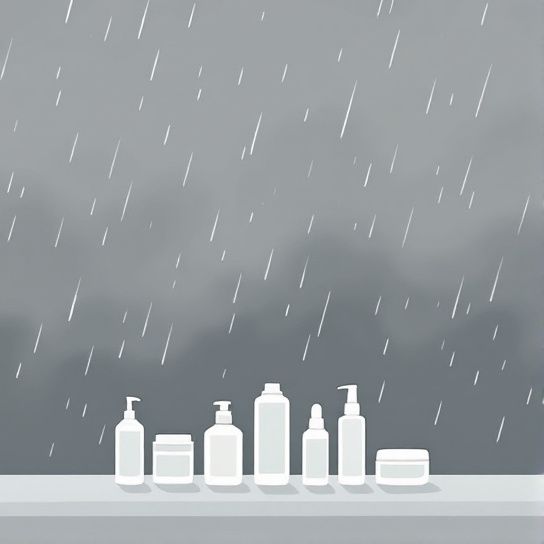So, you’re wrestling with that biting winter wind, huh? We’ve all been there—bundled up and braving the chill, only to find ourselves still feeling the sting of cold wind on our faces. It’s like, you did everything right, but winter has its own sneaky game plan. Trust me, I get it. Winter winds can cut through even the best defenses. But don’t worry, I’ve picked up some tricks along the way, and I’m sure we can find a way to beat that icy breeze together.
Wintertime has its own charm—snow-draped landscapes and cozy fireside moments—but it’s not all hot cocoa magic. One thing that can really put a damper on the winter wonderland is harsh, relentless wind. Let’s chat about ways to shield ourselves from these chilly gales, because honestly, we shouldn’t suffer through it.
Understanding the Chill: Why Does Cold Wind Feel So Brutal?
Before we dive into solutions, let’s chat about why exactly does wind make the cold feel so much worse? We can be at, say, 30 degrees Fahrenheit with no wind, and it’s bearable. But introduce wind, and suddenly it feels arctic. Here’s the deal: cold wind sweeps away the warm air that insulates your body. It’s a sneaky thief, swiping the warmth you’ve gathered, which makes the environment around you—and your skin—feel much colder. This is why we’ve got this whole “wind chill factor” term in weather forecasts. Not just a fancy term; it’s actually a scale of just how fast your warmth is being snatched away.
Build Your Defense: Dressing to Shield Yourself
The secret sauce? Layers. They aren’t just for cakes and onions. Here’s a quick breakdown of layering to outsmart that winter wind:
1. Base Layer: The Invisible Henchman
Think of this layer as your heat trapper. You need something that wicks away moisture and keeps that precious body heat close. Merino wool and synthetic fibers are great mates for this. Cotton’s a big no, though—it’ll retain sweat and before you know it, you’re shivering.

2. Insulating Layer: The Weather Warrior
This layer’s your portable heater. Fleece or down options are great here. The goal? Insulate, insulate, insulate. It’s like adding insulation to a house; it keeps the heat where it belongs—near you.
3. Outer Layer: The Wind and Water Shield
Here’s your heavy-duty protector, your shield—the outer layer needs to fend off wind and rain. Opt for something labeled “windproof” or “water-resistant”. A piece with some breathability ensures you won’t get too stuffy inside.
4. Accessories: The Cherry on Top
Don’t forget the little details—hats, scarves, and gloves can make a night and day difference. Ever heard that a lot of heat escapes through your head? Yep, that’s true. Toss a warm hat over your noggin, and wrap a cozy scarf around your neck. And gloves, well, they’re a must. Cold hands are just the worst, aren’t they? Keep them snug in thermal gloves.
Prepping Your Skin: A Forgotten Frontier
Now, let’s talk about something a lot of folks don’t even consider: wind protection for your skin. Winter wind exposure can lead to something called “climate acne”. Strange term, right? But what it refers to is the way skin can react—dry, irritated, and unexpectedly breakout-prone.
Hydrating with Moisturizers
Before you step outside, make sure your skin’s dressed, too. Use a good moisturizer, ideally one that’s oil-based, because oil forms a protective layer more effectively than water-based ones. If you can, look for one that touts its ability to shield your skin against the elements.

Sun Protection—Yes, Even Now
Don’t skip the SPF. Sounds odd, thinking about sunblock in a season without much sun, but those rays can still sneak their way through. A moisturizer with SPF 30 can pull double duty for you.
Smart Home Setup: Battling the Breeze Indoors
Alright, you’re inside, finally away from the relentless wind, but here’s a pro tip—don’t let your home become a cold wind playground either. Seal those window drafts. You can use foam tape, weather stripping, or even just a rolled-up towel for a quick fix. That way, you trap heat inside and keep the unwelcome breezes where they belong—outside.
Make Outdoor Time More Pleasant: Strategies to Try
You can’t stay inside all winter, right? Sometimes you’ve got errands or you just want to enjoy the splendor of a winter hike. Here’s what you can do:
Timing is Everything
Check the weather report and dodge the crazy windy days when you can. If you can avoid going out in the peak of windy hells, kudos to you. When it needs to happen, try early mornings when it’s often less windy. You might catch the sunrise too—that’s always a bonus.
A Warm Drink—Nature’s Little Hug

Never underestimate the power of a hot cup of tea or coffee snugged tightly in your hands. Not only does it warm your insides, but it gives you something lovely to focus on other than that biting wind. Also, a good thermos keeps your drink hot even if you dawdle—speaking from experience.
Forward Planning: Consider Your Route
Got multiple routes? Choose wisely. Walk among buildings or trees if possible. They can act as natural windbreaks, sparing you from the full brunt of the cold wind.
Dealing with Common Misconceptions: The Truth about Keeping Warm
There’s this hilarious but persistent myth that the more layers, the better. Well, sorta. Ever notice how piling on multiple sweaters can leave you feeling immobile and uncomfortable? The truth is, three properly chosen and layered garments often work better than a whole pile of randomly selected winter outfits.
Another sticky misconception is that chugging whisky or brandy will warm you up. Not quite—it actually tricks your body into feeling warm while your core temperature drops. So maybe just stick to your hot chocolate for actual warmth if you’re venturing into the cold.
Wrap Up and Rewind: Giving Winter Wind a Run for Its Money
Remember, the goal here is to stay smart and prepared. Treat the wind like an annoying guest that you can absolutely keep at bay. Dress appropriately with insulating layers, protect your skin with hardy moisturizers that won’t let climate acne win, and make sure your living space remains a cozy retreat through thoughtful weatherproofing.
To sum it all up, winter is a bit of a magical terror. While it comes as a package deal, you’re now armed to enjoy the charm while cleverly dodging the not-so-ideal aspects of it, like the biting wind. You’ll master this winter thing yet, and once you’re equipped with the right tools and insights—for you and your skin— the season might just become a cherished time rather than one to dread.
And remember, everyone has their own routine that makes them feel snug; find yours and hold onto it. Those chilled days can’t compete when you’ve got the right strategy in place. Stay cozy, and trust me, you’ve got this.
Frequently Asked Questions
How does climate change affect acne?
Climate change can exacerbate acne through several mechanisms. Warmer temperatures and increased UV radiation can stimulate the growth of *Cutibacterium acnes*, a bacteria associated with acne. Additionally, changes in temperature and humidity can increase sebum levels and pilosebaceous unit swelling, leading to acne flares[2][3].
What role does air pollution play in climate acne?
Air pollution is a significant environmental factor that can contribute to acne. Pollutants can cause oxidative stress and damage to the skin, leading to inflammation and clogged pores. Moreover, air pollution can alter the skin microbiome, making it more susceptible to acne-causing bacteria[1][2][3].
How do seasonal changes impact acne?
Seasonal changes can significantly impact acne. During the winter, dry air can lead to increased sebum production and flaky skin, making acne worse. In contrast, humid air in warmer seasons can trap oil on the skin’s surface, creating an environment where acne-causing bacteria can thrive. Adjusting skincare routines according to the season can help manage these changes[4][5].
What skincare practices can help mitigate climate acne?
To mitigate climate acne, it is important to maintain a consistent skincare routine. This includes using gentle cleansers, non-comedogenic moisturizers, and sunscreen with SPF 30 or higher. Additionally, avoiding hot water, limiting the use of drying acne treatments during dry seasons, and adjusting your skincare products according to the humidity and temperature can help protect your skin[1][4][5].
References










